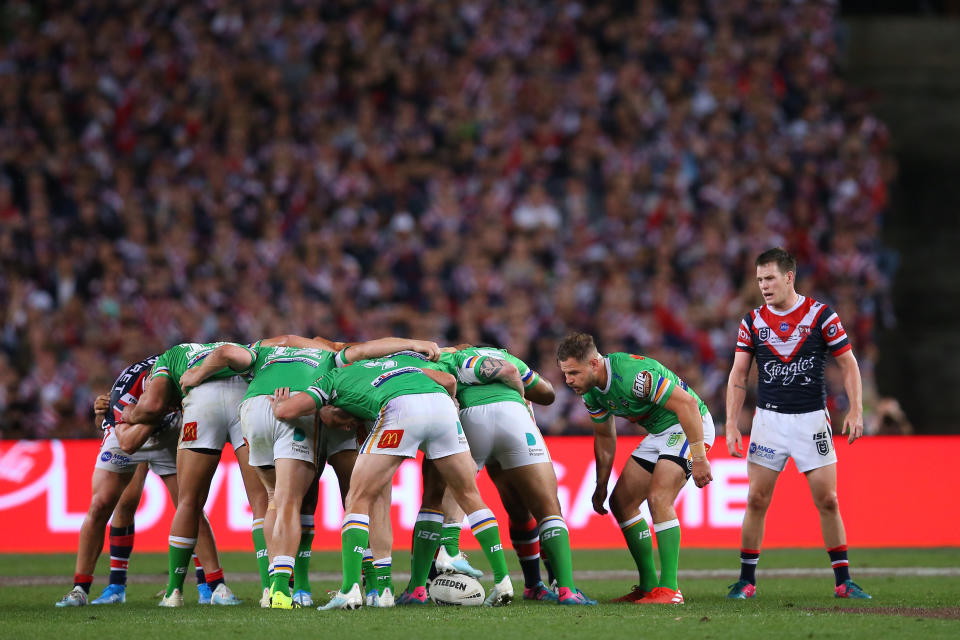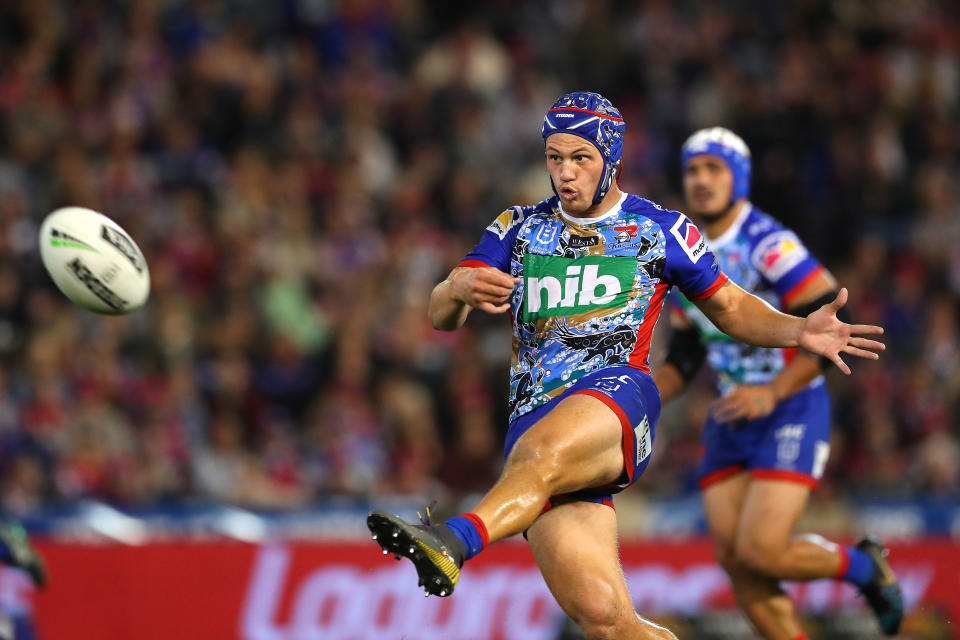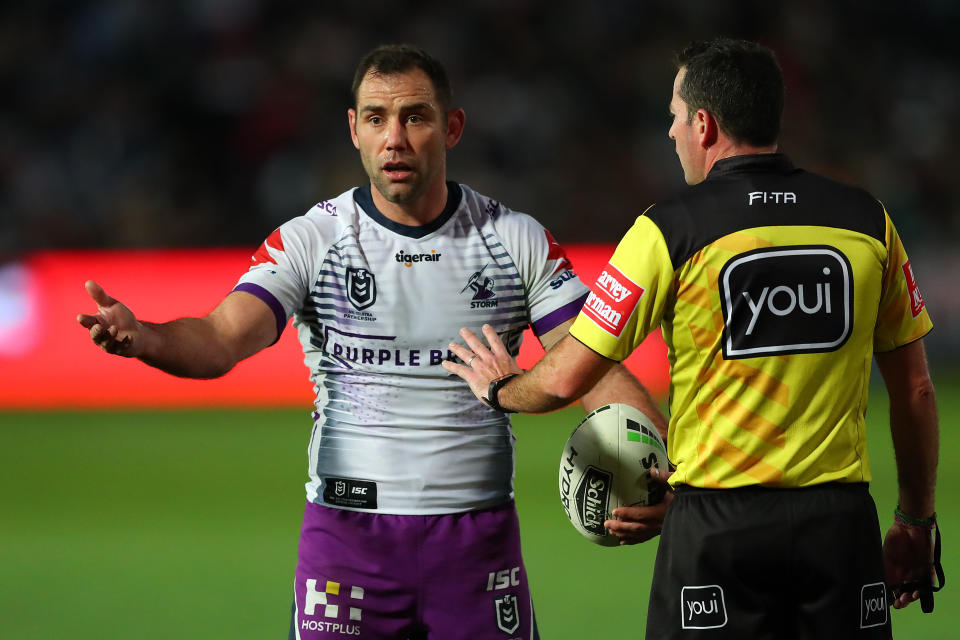Explainer: The new NRL rules set to make an impact in 2020
The NRL has introduced a few rule changes for the 2020 season and a couple could have a huge impact on how your team tackles the game.
Four major rule changes are set to impact the game and the tactics teams use in 2020:
Tackling an attacking player in the air
This is the biggest rule change that could impact the way kicking halves direct their play.
The NRL has forbidden the tackling of attacking players in the air for the up-coming season.
'SLOPPY’: Fans slam NRL ad over 'litany of errors'
While tackling players in the air has been outlawed for some time, players were allowed to hold a player in mid-air if they were in a scoring position.
But according to former Blues half Jamie Soward, this new rule change will have the biggest impact on the game.

Soward said teams with combinations of accurate kickers and athletic wingers, such as Mitchell Moses and Blake Ferguson for Parramatta or Luke Keary and Daniel Tupou for the Roosters, will have a huge advantage.
“Some sides are going to struggle with the rule big time. We could see smaller wingers opting to bat the ball dead rather than risking an aerial contest,” he told NRL.com.
“And for kickers who can't find their range, they'll frequently give away seven-tackle sets by kicking too deep or release the pressure by coming up short.”
Scrum changes
The second rule change designed to create more attacking intent is the changes to where teams can pack down a scrum.
Attacking teams will now have five seconds to inform the referee where they would like to pack the scrum on three lateral positions.
Teams can pack the scrum on the nearest 10m line, 20m line or in line with the black dot on the crossbar in the centre of the field.

This attacking change to the rule could allow teams to take advantage of the space on the field and produce some set plays.
Teams with attacking talent could open up the space either side of the scrum and target weaker one-on-one defenders.
Players such as the Knights’ Kalyn Ponga, Broncos centre James Roberts or Roosters’ star James Tedesco could all benefit from tactical set plays and more space to roam on either side of the scrum in 2020.
20/40 rule
The 40/20 rule, which allows the team to regain possession if the kicker launches the ball from inside his own 40m line and inside the opponents 20m line, has a partner.
Kickers will now have the opportunity to get their team out of trouble and regain possession if they kick it from within their 20m line and land it within their opponent’s 40m line.

Cherry-Evans is regarded as one of the best kickers in the game, having successfully booted 26 40/20s for Manly since his debut in 2011.
No other player has kicked more than 21 in that time, while Cherry-Evans' five last season were also the most in the NRL.
But even the Manly halfback isn’t going to be searching for the new advantage unless he has no other choice.
"We have had this conversation at training," Cherry-Evans told AAP.
'UTTERLY DESTROYED IT’: NRL divides opinion with 'politically correct' ad
"The biggest dictator for me will be how my forwards are going. I'm not going to throw them under the bus if they are exhausted.
"Because the reality is I'm going back to near the wing to defend and they are going to have to tackle.
"There will be a time and a place where my instincts are going to take over and I'm just going to do it when the moment is right.”
Captain’s challenge
This year will see the captain’s challenge introduced to allow a team to send a decision up to the bunker.
The main concern with the introduction of captain's challenge is adding extra stoppages to matches, which slows the game down and can frustrate fans.
Each team will get one unsuccessful challenge per game, and will have 10 seconds to alert the referee that they wish to contest a decision.
The only decisions that can be challenged are those involving a structured restart of play, such as a penalty or scrum.

The opportunity to contest a call is over once play resumes.
NRL boss Todd Greenberg said the challenge was designed to only be used in stoppages to make sure the game still flowed.
"We have done it very specifically so you can only use it when there is a stoppage in play," Greenberg said when asked about the prospect of teams using the initiative strategically.
"If there is a decision that is wrong on the field and we want to correct it through technology then we will do it, but we want to make sure we don't lose the continuity of the game, which is why you only get one (unsuccessful challenge).
"You get it wrong and you lose it."
With AAP

